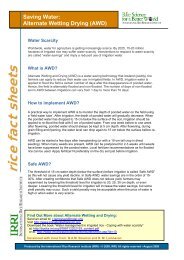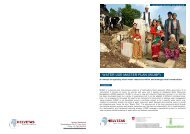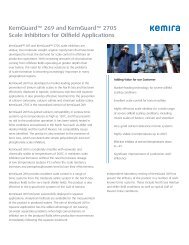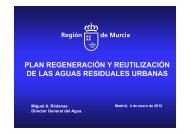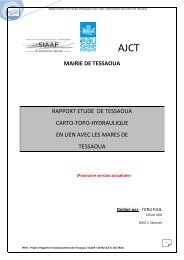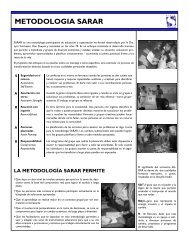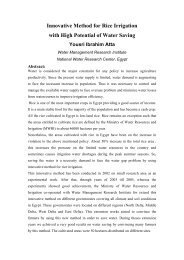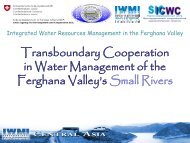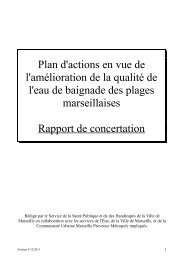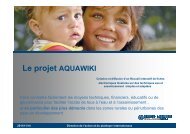FAO Project Document book - Solutions for Water platform - World ...
FAO Project Document book - Solutions for Water platform - World ...
FAO Project Document book - Solutions for Water platform - World ...
Create successful ePaper yourself
Turn your PDF publications into a flip-book with our unique Google optimized e-Paper software.
<strong>Project</strong> <strong>Document</strong><br />
programme. Further more, the large number of wells, entrenched tradition of private users<br />
right, and limited administrative capacities in many rural areas, militate against the success<br />
of centralized regulatory approaches. GOI emphasizes the importance of stakeholder<br />
participation in the management of wells (MOWR, 1996). Expanding this approach to include<br />
mechanisms <strong>for</strong> effective stakeholder participation in management of the resource base<br />
will be critical.<br />
It is clear from the above discussion that the poor bear the greatest burden of groundwater<br />
management. Given the framework of the project proposal, it is beyond doubt that the<br />
main beneficiaries of sustainable groundwater management will be those small/marginal<br />
farmers and landless depending on agriculture labour.<br />
B 1e<br />
Economic problems<br />
Groundwater development has led to increased drought proofing of India’s agricultural<br />
economy. If one compares the drought years 1965-66 and 1987-88, food grains production<br />
declined 19% in 1965-66, in contrast to 1987-88, when food grain production declined only<br />
2%. Much of this can be attributed to the spread of irrigation in general and of groundwater<br />
irrigation in particular. The growth of India’s irrigated area, particularly, the area irrigated<br />
with groundwater has greatly reduced the economy’s vulnerability to face reductions in<br />
rainfall, drought proofing the rural economy in general and the crop sector in particular.<br />
Groundwater irrigation supports employment generation and thus rural development and<br />
poverty alleviation. Groundwater development also promotes direct and indirect employment<br />
of skilled and unskilled persons. Additional indirect employment created on every ha of<br />
irrigated land through increased agricultural activity would be approximately 45 days per<br />
ha.<br />
A rough estimate suggests that about 80% of the population in the target area have<br />
agriculture and allied activities as their principal livelihood. There<strong>for</strong>e any poverty alleviation<br />
initiative should result in improved agricultural productivity. All the seven districts, covered<br />
under the project are declared as drought prone areas by the Government. Apart from<br />
vagaries of the monsoon, the land holding pattern makes the small and marginal dry land<br />
farmers the most vulnerable.<br />
30



